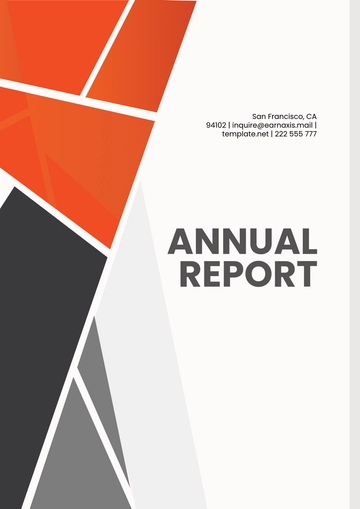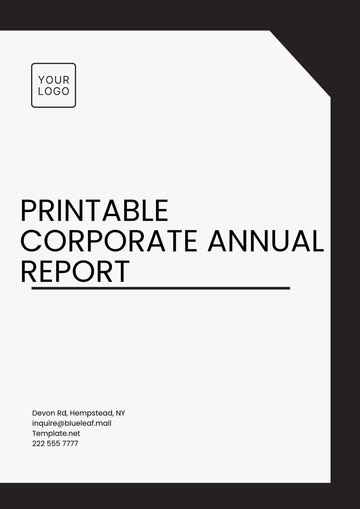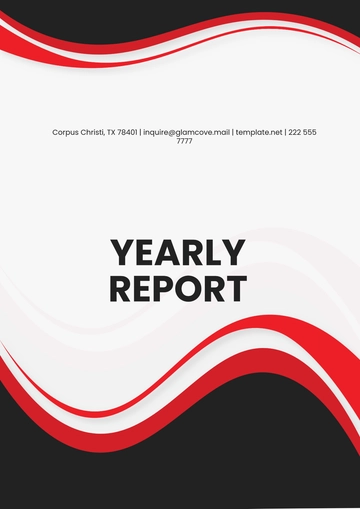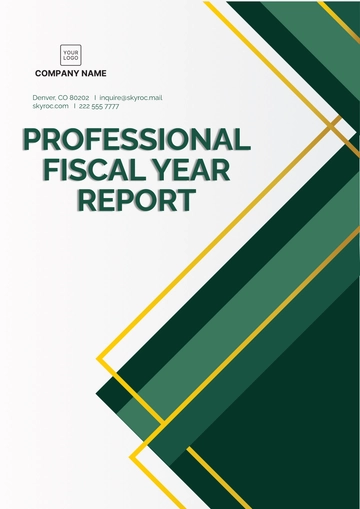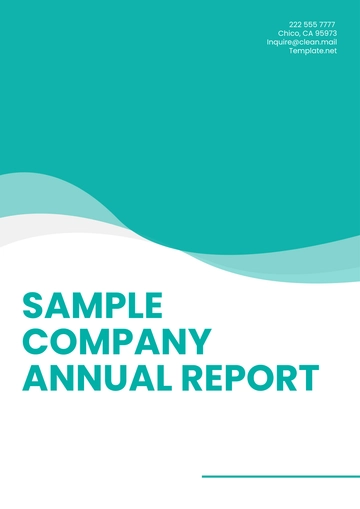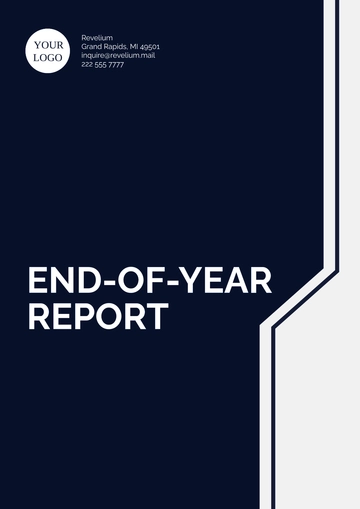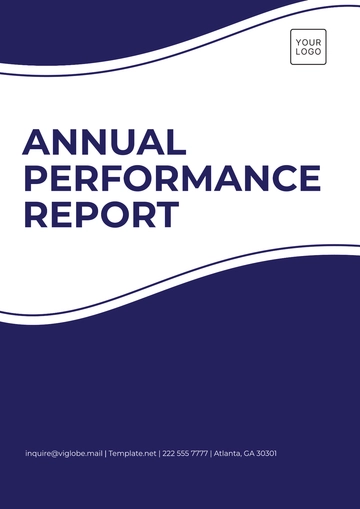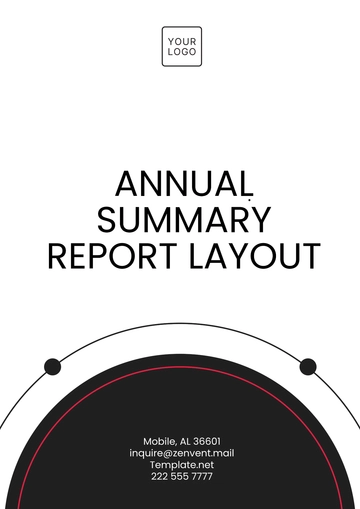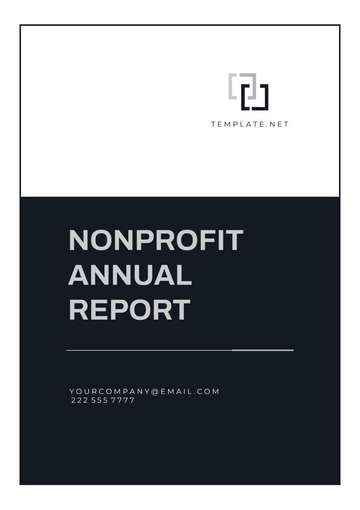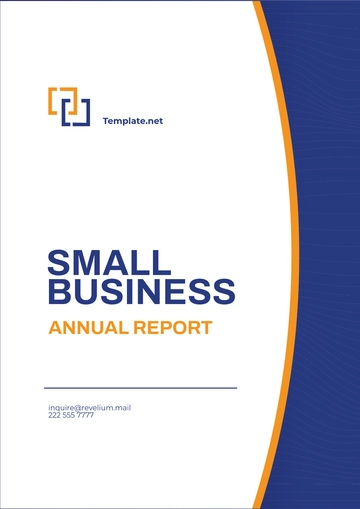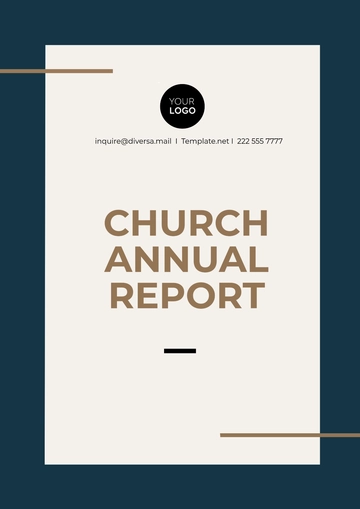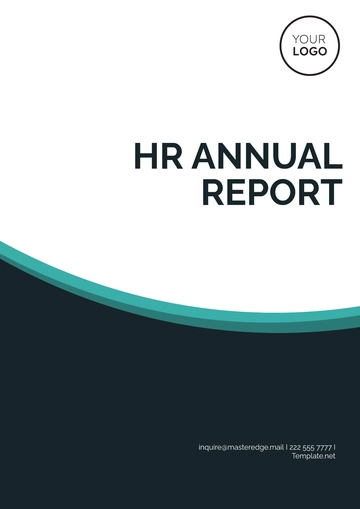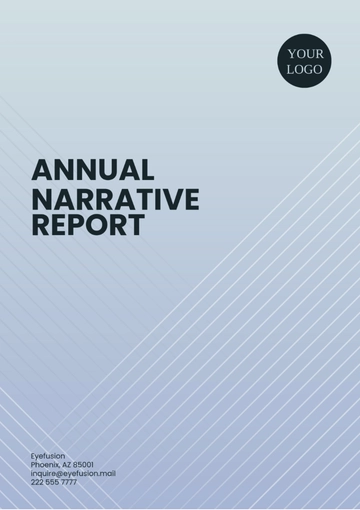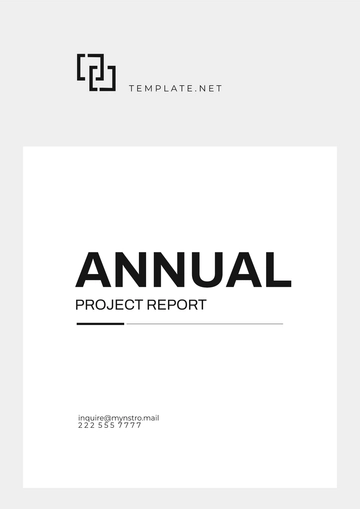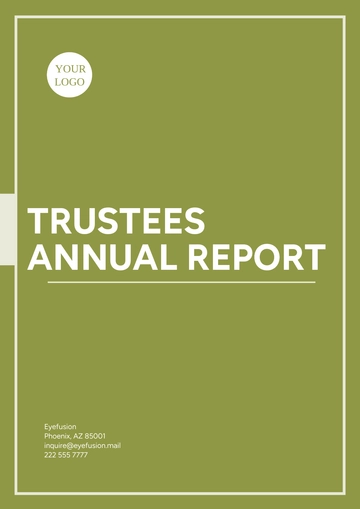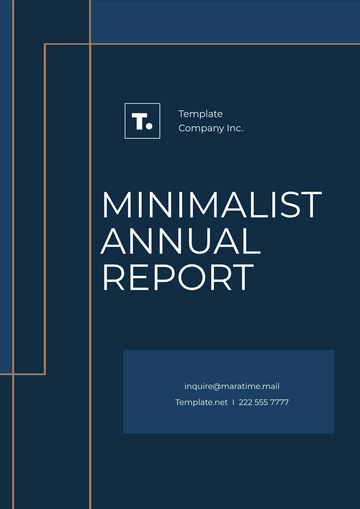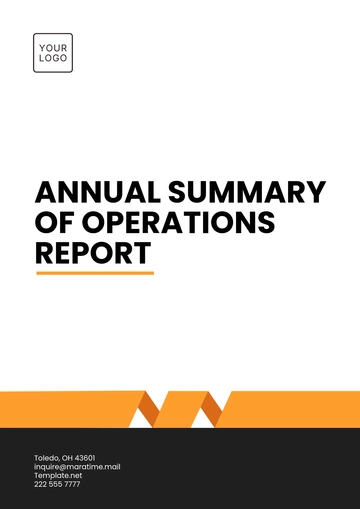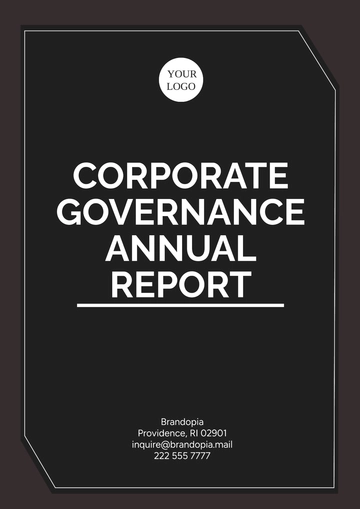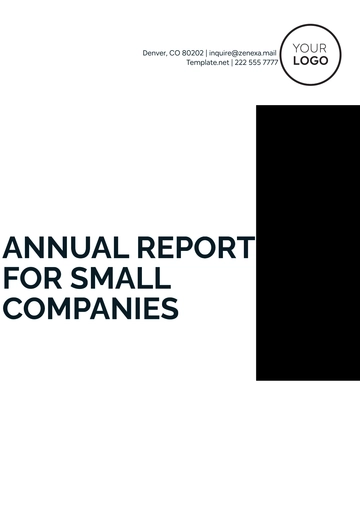Free Annual Finance Accounts Report
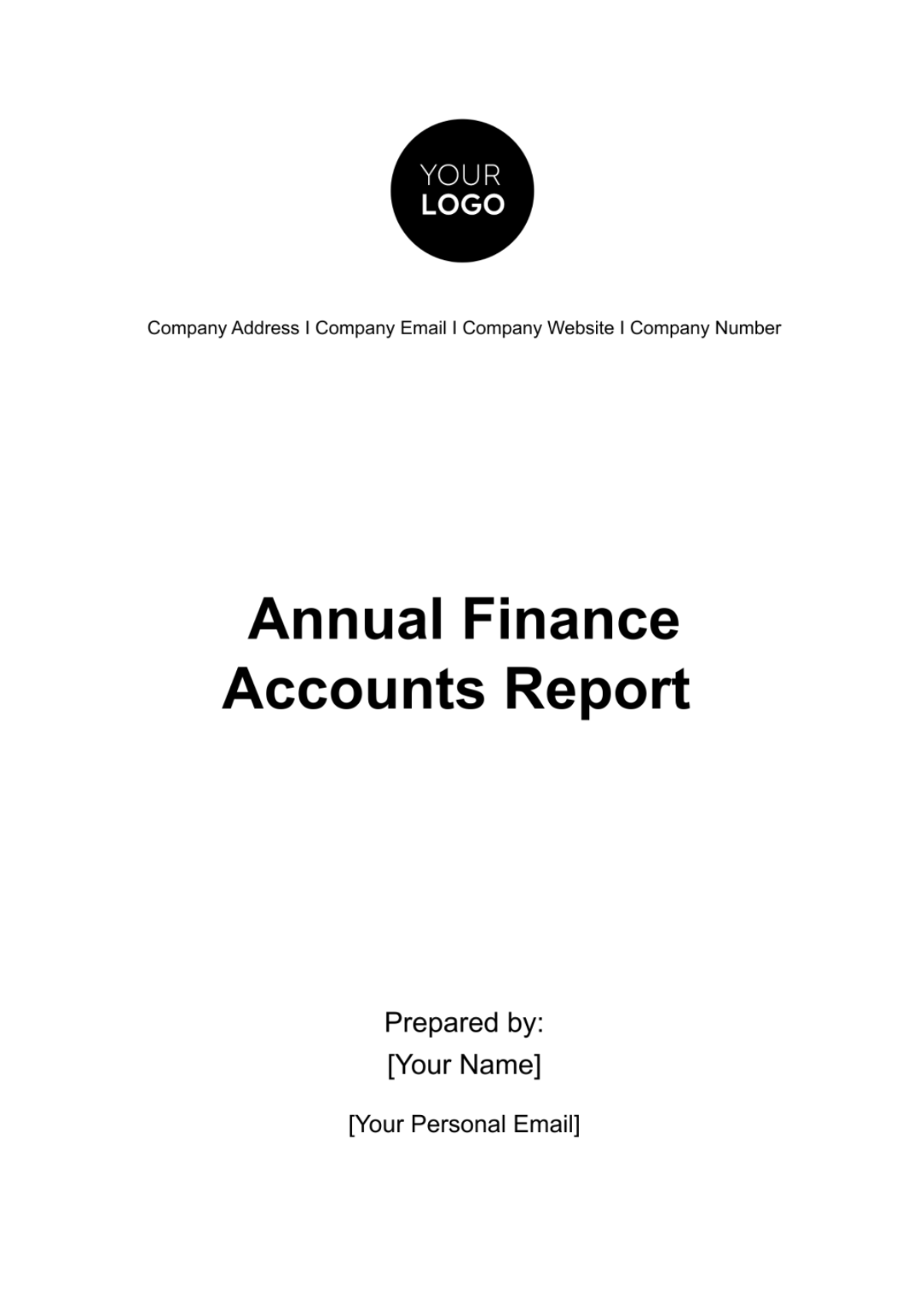
Executive Summary
This Annual Accounts Report for the fiscal year ending [Date] provides a detailed and comprehensive analysis of the financial performance of [Fictional Company Name]. The report focuses on critical aspects of our financial management, particularly in the areas of Accounts Receivable (AR) and Accounts Payable (AP), which are pivotal in maintaining our company's cash flow and financial stability.
During this fiscal year, we have seen significant developments in our AR management strategies, which have positively impacted our cash flow and reduced bad debt levels. Moreover, our AP strategies have been optimized to maintain strong relationships with suppliers while managing our cash outflows effectively.
Our financial highlights show a [positive/negative] trend in revenue and net income, indicating [growth/challenges] in our business operations. This report also addresses risk management, specifically in terms of credit and liquidity risks, ensuring that our company is well-prepared for future uncertainties.
Overall, the financial health of [Fictional Company Name] is [stable/developing/challenged], and this report serves as a testament to our ongoing efforts to enhance financial performance and sustainability.
Accounts Receivable Management
Overview
Accounts Receivable (AR) is a key indicator of our company's financial health, representing the credit sales that are yet to be collected. Effective AR management is not just about ensuring liquidity but also about maintaining customer relationships and mitigating credit risk. This year, we have implemented several new measures to enhance our AR management, resulting in improved cash flow and reduced debtor days.
Age Analysis of Receivables
Age Bracket | Amount | Percentage of Total AR |
0-30 days | $X | %X1 |
31-60 days | $Y | %Y1 |
61-90 days | $Z | %Z1 |
>90 days | $A | %A1 |
The majority of our receivables are within the 0-30 days bracket, indicating a healthy turnover in receivables. However, we continuously monitor accounts that are over 60 days due, implementing stricter credit control measures where necessary.
Receivables Turnover Ratio
Our receivables turnover ratio for the year was X:1, an improvement from the previous year's Y:1. This indicates a faster collection of receivables, positively impacting our liquidity.
Customer Credit Policy
We revised our customer credit policy to include more stringent credit checks and a tiered credit system, leading to a decrease in bad debt and more secure credit sales. Our ongoing analysis of customer creditworthiness helps us in preemptively identifying potential bad debts.
Bad Debt Analysis
This year, bad debts accounted for $[1]B, which is a [5%] decrease from the previous year. The decrease is primarily due to our enhanced credit control measures and a shift in our sales strategy towards more reliable customers.
Accounts Payable Management
Overview
The Accounts Payable (AP) division of [Fictional Company Name] plays a critical role in managing the company's short-term liabilities and maintaining robust financial health. This fiscal year, we have focused on optimizing our AP processes to improve cash flow management, enhance relationships with suppliers, and maintain our creditworthiness. Our approach to AP management involves strategic payment scheduling, leveraging supplier discounts, and maintaining transparency in our dealings.
Age Analysis of Payables
Age Bracket | Amount | Percentage of Total AP |
0-30 days | $C | %C1 |
31-60 days | $D | %D1 |
61-90 days | $E | %E1 |
>90 days | $F | %F1 |
Our aim is to keep the majority of our payables within the 0-30 days bracket. This ensures timely payments to our suppliers, thus avoiding late fees and maintaining good supplier relationships.
Payment Terms Negotiation
We actively negotiate payment terms with our suppliers to align with our cash flow cycles. This year, we have successfully extended our average payment terms from X days to Y days, providing us with more financial flexibility and aiding in better cash management.
Vendor Payment Analysis
Our vendor payment analysis indicates an average payment period of [X days]. This is a result of our improved payment processes, which include electronic invoicing and automated payment systems. These improvements have not only streamlined our AP processes but also reduced errors and delays in payments.
Supplier Relationship Management
We prioritize maintaining strong relationships with our key suppliers. Regular communication, fair dealing, and timely payments are part of our strategy to build trust and cooperation with our suppliers. This approach has led to better negotiation terms and sometimes preferential treatment in supply chain management.
Use of Technology in AP
This year, we have increased our investment in AP automation technologies. The implementation of electronic invoicing, automated payment systems, and advanced AP software has resulted in more efficient processes, reduced manual errors, and better compliance with financial regulations.
Impact on Cash Flow
Effective AP management has a direct impact on our company's cash flow. By optimizing our payables, we have been able to maintain a healthy balance between our incoming and outgoing cash, ensuring financial stability and the ability to invest in growth opportunities.
Accounts Payable Management
Overview
The Accounts Payable (AP) division at [Fictional Company Name] is dedicated to managing the company's short-term liabilities efficiently. This year, we focused on optimizing payment processes, leveraging technology for better efficiency, and maintaining strong supplier relationships.
Age Analysis of Payables
Age Bracket | Amount (fictional) | Percentage of Total AP |
0-30 days | $100,000 | 50% |
31-60 days | $60,000 | 30% |
61-90 days | $30,000 | 15% |
>90 days | $10,000 | 5% |
A significant portion of our payables, 50%, are within the 0-30 days bracket, indicating our commitment to timely payments and maintaining good supplier relations.
Payment Terms Negotiation
This year, we extended our average payment terms from 45 days to 60 days, benefiting our cash flow management and allowing greater flexibility in our financial operations.
Vendor Payment Analysis
The average payment period for our vendors stands at 50 days. This period reflects our strategy of balancing prompt payments with effective cash flow management.
Supplier Relationship Management
Our approach to supplier relationship management is based on fairness, transparency, and punctuality in payments. This approach has been beneficial in securing better terms and ensuring a reliable supply chain.
Use of Technology in AP
We've invested in AP automation technologies, including electronic invoicing and automated payment systems, leading to improved efficiency and reduced errors in the payment process.
Impact on Cash Flow
The effective management of AP has positively impacted our cash flow, allowing us to maintain financial stability and invest in key growth areas of our business.
Risk Management
Overview
In the current fiscal year, [Fictional Company Name] has placed a strong emphasis on identifying, assessing, and mitigating various financial risks. Our risk management strategy is integral to our overall financial health and long-term sustainability.
Credit Risk
Credit Risk Assessment
Customer Segment | Credit Exposure (fictional) | Risk Level |
Large Enterprises | $200,000 | Low |
Medium Businesses | $150,000 | Medium |
Small Businesses | $100,000 | High |
We have employed rigorous credit assessment procedures to categorize our customers into different risk levels. This has allowed us to apply tailored credit policies, thus reducing the likelihood of bad debts.
Mitigation Strategies
Our mitigation strategies include:
Enhancing credit vetting processes.
Offering dynamic credit limits based on real-time financial assessments.
Implementing stricter collection practices for high-risk segments.
Liquidity Risk
Cash Flow Management
Effective cash flow management has been a cornerstone of our approach to mitigating liquidity risk. We have ensured that our cash and liquid assets are sufficient to meet short-term liabilities and unforeseen expenses.
Contingency Planning
A contingency fund has been established to address unexpected cash flow disruptions. This fund represents a significant percentage of our annual revenue, ensuring that we are well-prepared for financial uncertainties.
Market Risk
Exposure to Market Fluctuations
We are exposed to market risk primarily through:
Foreign exchange rate fluctuations, due to our international operations.
Interest rate changes affecting our debt servicing costs.
Hedging Strategies
To manage market risk, we have implemented hedging strategies including forward contracts and interest rate swaps, which have proven effective in stabilizing our financials against market volatilities.
Conclusion
This year, [Fictional Company Name] has demonstrated resilience and adaptability in managing financial risks. Our comprehensive risk management framework has not only protected us from potential financial losses but also positioned us for sustainable growth. We believe that our ongoing efforts to strengthen our risk management practices will continue to support our financial stability and operational excellence in the upcoming fiscal year.
- 100% Customizable, free editor
- Access 1 Million+ Templates, photo’s & graphics
- Download or share as a template
- Click and replace photos, graphics, text, backgrounds
- Resize, crop, AI write & more
- Access advanced editor
Summarize your financial year with the Annual Finance Accounts Report Template from Template.net. Editable and customizable, this report consolidates financial activities over the year. It's essential for stakeholders, providing an overview of income, expenses, and financial position, aiding in transparency, strategic planning, and evaluation of financial performance.
You may also like
- Sales Report
- Daily Report
- Project Report
- Business Report
- Weekly Report
- Incident Report
- Annual Report
- Report Layout
- Report Design
- Progress Report
- Marketing Report
- Company Report
- Monthly Report
- Audit Report
- Status Report
- School Report
- Reports Hr
- Management Report
- Project Status Report
- Handover Report
- Health And Safety Report
- Restaurant Report
- Construction Report
- Research Report
- Evaluation Report
- Investigation Report
- Employee Report
- Advertising Report
- Weekly Status Report
- Project Management Report
- Finance Report
- Service Report
- Technical Report
- Meeting Report
- Quarterly Report
- Inspection Report
- Medical Report
- Test Report
- Summary Report
- Inventory Report
- Valuation Report
- Operations Report
- Payroll Report
- Training Report
- Job Report
- Case Report
- Performance Report
- Board Report
- Internal Audit Report
- Student Report
- Monthly Management Report
- Small Business Report
- Accident Report
- Call Center Report
- Activity Report
- IT and Software Report
- Internship Report
- Visit Report
- Product Report
- Book Report
- Property Report
- Recruitment Report
- University Report
- Event Report
- SEO Report
- Conference Report
- Narrative Report
- Nursing Home Report
- Preschool Report
- Call Report
- Customer Report
- Employee Incident Report
- Accomplishment Report
- Social Media Report
- Work From Home Report
- Security Report
- Damage Report
- Quality Report
- Internal Report
- Nurse Report
- Real Estate Report
- Hotel Report
- Equipment Report
- Credit Report
- Field Report
- Non Profit Report
- Maintenance Report
- News Report
- Survey Report
- Executive Report
- Law Firm Report
- Advertising Agency Report
- Interior Design Report
- Travel Agency Report
- Stock Report
- Salon Report
- Bug Report
- Workplace Report
- Action Report
- Investor Report
- Cleaning Services Report
- Consulting Report
- Freelancer Report
- Site Visit Report
- Trip Report
- Classroom Observation Report
- Vehicle Report
- Final Report
- Software Report
